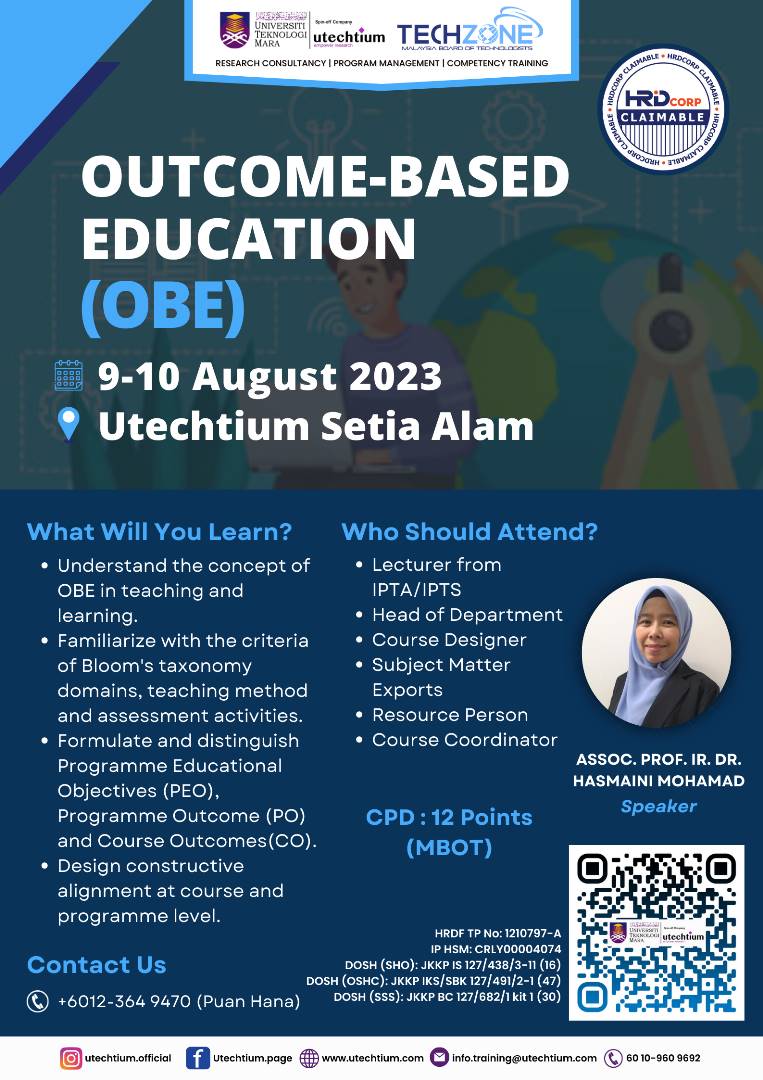
Utechtium Setia Alam | 2023-08-09
RM 788.00
Outcome Based Education (OBE) has been cultivated among the Institute of Higher Learning (IHL) practitioners in Malaysia since 2008. The understanding of OBE in teaching and learning (T&L) has been strengthened ever since. OBE has changed a culture shift of the Malaysian education from the conventional prescriptive-based system towards an outcome-based system. The changes can be seen from a well-designed of academic curriculum structure where students will successfully achieve the intended learning outcomes at the end of their study. OBE is embraced in the curriculum starting from planning the programme and course learning outcomes, implementing learning activities, measuring the specified assessment, and finally ensuring continuous improvement.
The correct understanding of OBE would contribute to an excellent implementation of OBE in T&L activities. Using Biggs' model of constructive alignment in designing curriculum will ensuring a coherent implementation in place. The key success of the curriculum design comes from a clear constructive alignment development at course and programme level. The assessment tasks are aligned with the learning activities and the taxonomy domain for the intended learning outcomes.
Module 1:
1. Construct Programme Educational Objectives (PEO), Programme 2. Outcome (PO) and Course Outcome (CO).
3. Map outcomes using the Constructive Alignment concept, based on Bloom's Taxonomy of Learning.
4. Determine Student Learning Time (SLT) for a course
5. Construct lesson plan and rubrics for assessments.
MODULE 2:
At the end of the seminar, all participants will be able to:
Design suitable assessment activities for the attainment of CO and PO.
Measure the course outcome based on the assessment activities.
Perform Closing the Loop (CDL) and Continuous Quality Improvement (CQI).
Explain the requirement of Engineering Accreditation Council (EAC) Manual.
Module 1:
Topic 1: OBE Overview
Topic 2: Specify PEO, PO and CO
Topic 3: Mapping Outcomes and Assessment
Topic 4: Student Learning Time (SLT)
Topic 5: Lesson Plan and Rubrics
Module 2:
Topic 1: Designing Assessment Activities
Topic 2: Measuring the CO
Topic 3: How to write CQI
Topic 4: EAC requirement
ASSOC. PROF. IR. DR. HASMAINI MOHAMAD
This course is suitable for department heads, coordinators of multi-department degree programs, and faculty members to formulate learning outcomes, design instruction to address the outcomes, and assess the degree to which the outcomes have been achieved.
